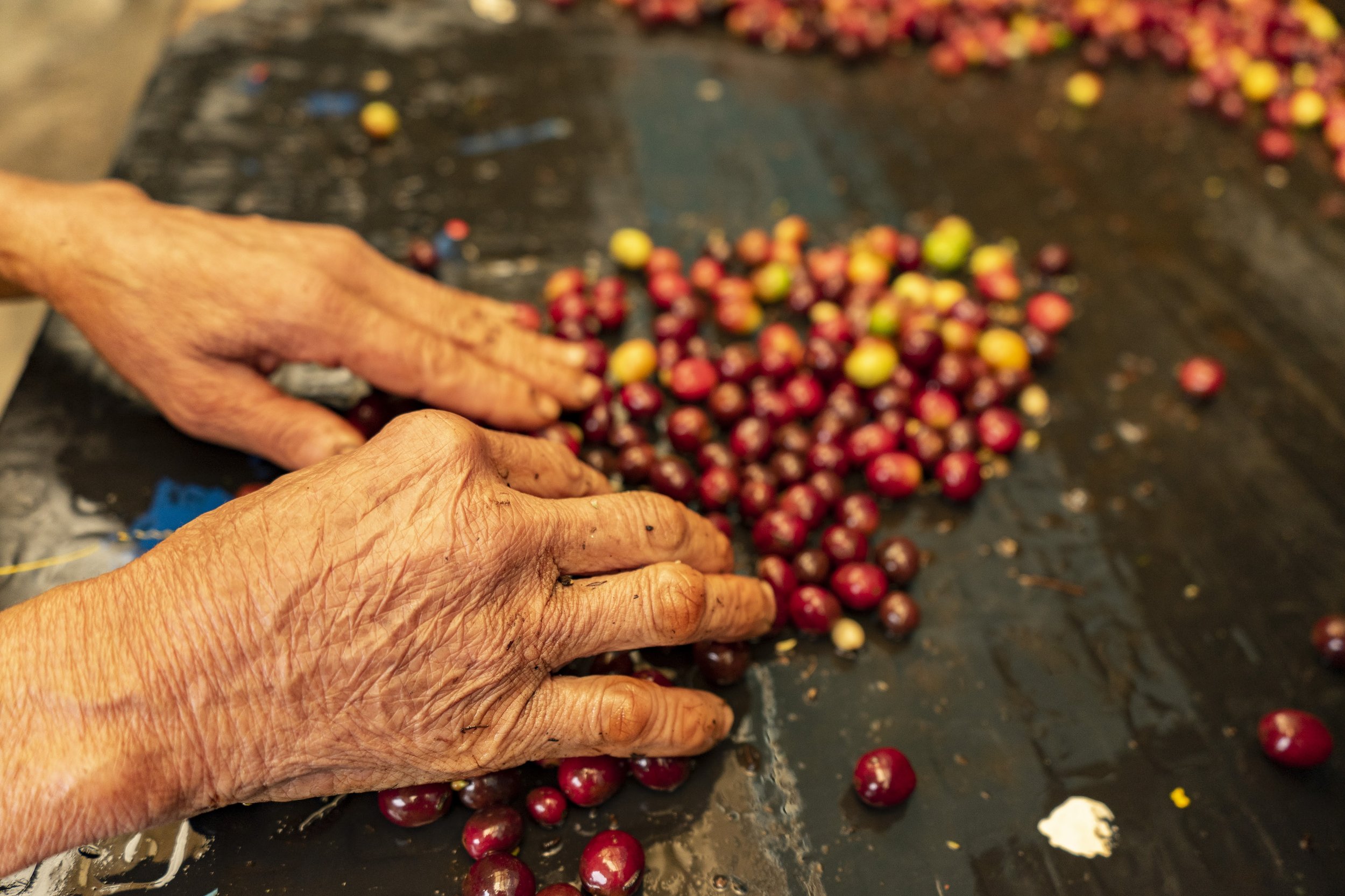This new decaf is extra special. . This new microlot is a single variety Pink Bourbon, rather than a field blend of Colombia, Caturra and Castillo that we had from our partners Raw Material earlier in the year. This means it is more refined in it's flavour with some beautiful floral notes when brewed as filter. It is still as sweet and rich as our previous decaf too, so it works beautiful in espresso based drinks too!
Villamaría's processing station, Jamaica, was chosen due to its perfect climate and altitude for the drying of naturally processed coffee. Alongside this, the large space available meant that producing high-quality naturals at scale was a possibility not available before.
Villamaría is a Colombian municipality located in the department of Caldas. The region is fed by numerous sources of water and natural resources. Villamaría is located a few kilometres from the city of Manizales, whose urban areas are surrounded by the Chinchiná River. The drying station "Jamaica" is located in Chinchiná, Caldas. The station currently represents the harvests of 30 to 50 coffee producing families in the surrounding area of Villarazo, sitting at altitudes higher than the drying station itself. As Jamaica sits 500 metres lower than the producers, at 1300 MASL. This climate is better suited to the processing of honey and natural coffees due to the hotter temperatures found here.
Dried for 15 days, in a temperature-controlled greenhouse finished in a mechanical dryer. Sugarcane decaffeination is often termed as a natural decaf. Ethyl Acetate is an organically existing compound and by-product found most commonly in the fermentation of fruits and is present in both ripe bananas and beer for example. The plant in Colombia, a short drive from Villamaria, uses water from the Navado del Ruis (a volcano between Caldas and Tolima) and natural ethyl acetate from fermented sugarcane sourced in the southern region of Palmira, Colombia.
This process begins with steaming of the coffee, increasing its porosity, beginning the hydrolysis of caffeine, which is usually bonded to salts and chlorogenic acid in the bean. The beans are then submerged in an ethyl acetate solvent until 97% of the caffeine is removed. Finally, steam is then used to lift residual traces of the compound. The ultimate residue which remains is ≥ 30 ppm, which is a level dramatically less than that of a banana!


